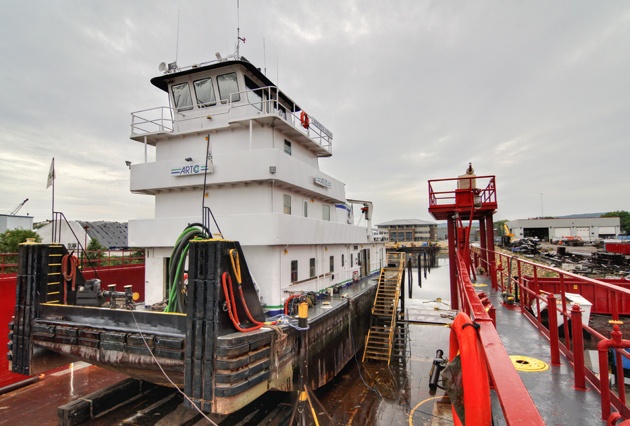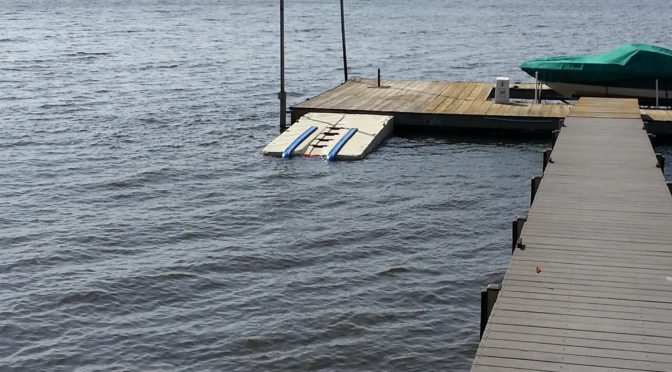Efficient Dock Repair Service Techniques: Making Sure Architectural Stability
Making sure the architectural stability of anchors with efficient repair service methods is critical for the durability and safety of marine facilities. This involves a multi-faceted method starting with comprehensive evaluations using advanced technologies like sonar tools and from another location ran lorries (ROVs) to detect both noticeable and hid damages. Subsequently, selecting the appropriate fixing products, such as composite materials and corrosion-resistant alloys, is essential for resilience. Structural support techniques, including the implementation of cross-bracing systems and load-distribution plates, play a vital function in mitigating tension factors. Nonetheless, the importance of these strategies comes to be obvious when checking out innovative fixing methods and preventative maintenance strategies.
Examining Dock Damages
Examining dock damages is an important initial action in making certain the architectural integrity and safety of any docking facility. Key aspects to examine include the dock's structure, pilings, outdoor decking, and equipment (Dock Repairs).
Architectural designers or certified examiners normally do these evaluations utilizing specialized methods and tools. Underwater inspections might use finder tools or remotely operated lorries (ROVs) to identify immersed damage. Above water, aesthetic examinations are enhanced by utilizing moisture meters and other analysis devices to reveal underlying problems not quickly noticeable to the nude eye.

Choosing Fixing Products
Picking the ideal repair products is a crucial action in the dock repair procedure, one that directly influences the longevity and efficiency of the repaired framework. Product selection have to be driven by aspects such as environmental problems, load-bearing requirements, and compatibility with existing dock parts. Timber is a typical choice for docks due to its natural durability and visual allure. Picking the appropriate kind of wood, such as pressure-treated lumber or naturally rot-resistant types like cedar or teak wood, is critical to endure water settings.
Along with wood, composite products are significantly popular due to their longevity and reduced maintenance needs. Composites, normally made from a mix of plastic and wood fibers, supply superb resistance to rot, insects, and UV damage. For metal docks, choosing corrosion-resistant alloys such as galvanized steel or marine-grade light weight aluminum is necessary to stop rust and make certain architectural honesty in saline water problems.
Epoxy resins and marine-grade sealers are important for repairing fractures and securing joints, providing a water-proof obstacle and boosting the dock's general strength. By thoroughly picking high-grade products, dock repairs can accomplish long-lasting results, consequently securing versus future deterioration and guaranteeing risk-free, trustworthy use.
Structural Support Strategies
Effective architectural reinforcement methods are essential in guaranteeing the security and longevity of dock fixings. One fundamental technique includes making use of steel or composite support bars (rebar) within concrete structures. Rebar provides additional tensile stamina, preventing cracks and dispersing tons more evenly. This technique is particularly reliable for docks revealed to hefty lots or rough ecological problems.
One more crucial method is the application of fiber-reinforced polymers (FRP) These materials provide high strength-to-weight ratios and outstanding resistance to corrosion, making them perfect navigate here for reinforcing wooden or concrete anchors. FRP can be applied in sheets or strips and bound with epoxy resins to boost architectural honesty.
Bracing and anchoring systems also play a vital role in architectural reinforcement. Cross-bracing, using steel or wood light beams, can neutralize lateral forces, lowering swaying and motion. Securing systems, such as helical piers or driven stacks, offer a stable structure by transferring loads to much deeper, a lot more steady soil layers.
Lastly, the combination of load-distribution plates can aid distribute weight extra uniformly throughout the dock's surface, alleviating local stress and anxiety points. These strategies collectively guarantee that docks remain risk-free and durable, with the ability of enduring the roughness of their operational environment.
Advanced Repair Service Methods

Another sophisticated technique involves underwater welding, which enables repair work to be conducted without the demand to dewater the area. This method is particularly beneficial for resolving structural issues in immersed dock parts, making certain minimal disruption to operations. Enhanced welding strategies, combined with robotic systems, deliver precision and integrity, thereby extending the lifespan of the dock.
Additionally, cathodic security systems are executed to avoid corrosion in metal dock structures. By utilizing sacrificial anodes or amazed current systems, these strategies properly minimize the electrochemical processes that bring about material wear and tear.
Lastly, progressed monitoring modern technologies, such as structural wellness surveillance (SHM) systems, give real-time information on the condition of dock structures. These systems allow positive upkeep and prompt interventions, eventually ensuring the long-lasting architectural honesty of the dock.
Upkeep and Prevention
Maintenance and avoidance are basic principles that underpin the longevity and safety of dock structures. Regular evaluations are paramount, allowing for early detection of deterioration, possible weak points, and environmental effects. A positive technique, including regular checks for corrosion, rot, and architectural shifts, alleviates expensive Click Here repair services and lengthens the dock's functional life.
Preventative procedures ought to consist of using protective finishes to steel parts to safeguard against corrosion and making use of treated wood to stand up to decay. Furthermore, guaranteeing correct water drainage and ventilation can stop water accumulation, which is a typical reason for architectural degradation. Including quality materials and sticking to producer guidelines throughout building and repair stages likewise play important roles in enhancing sturdiness.

Training personnel in dock upkeep finest techniques makes sure regular application of preventative actions. Leveraging technical advances, such as drones for inspections and sensing units for real-time surveillance, can further boost upkeep initiatives. By focusing on upkeep and avoidance, dock owners can make sure structural honesty, functional security, and economical monitoring over the dock's life-span.
Verdict
In conclusion, preserving the architectural integrity of aquatic facilities requires thorough dock repair work strategies. Advanced repair work methods, coupled with regular upkeep techniques, make sure the dock stays operational and secure under varied environmental conditions.
Ensuring the structural integrity of docks with reliable repair service techniques is vital for the longevity and security of aquatic facilities.Choosing the ideal repair materials is an essential step in the dock remediation procedure, one that directly influences the durability and performance of the repaired framework.Efficient structural support techniques are critical in ensuring the security and longevity of dock repairs. By prioritizing maintenance and avoidance, dock try this proprietors can make sure architectural stability, functional safety and security, and affordable administration over the dock's lifespan.
In conclusion, preserving the architectural honesty of marine facilities requires detailed dock repair methods.